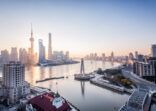Equity funds investing in Asia-Pacific ex-Japan generally deliver alpha across most time periods, but most of the returns were below 1% in US dollar terms, the Boston-based research firm said in the report.
Cerulli aggregated, on an asset-weighted and net-of-fee basis, the funds’ relative performance over their respective benchmarks across different time periods (The firm did not specify the region where the funds were sold).
Similarly, active products investing in global emerging markets performed nearly the same as or below their benchmarks, according to data from the firm’s March issue of its Asian monthly product trends report. US-focused equity funds underperformed across the different periods.
Actively-managed equity funds aggregated returns
|
Period |
APAC ex-Japan |
Global EM |
US |
|
1 year |
-2.3% |
0.1% |
-2.9% |
|
3 years |
0.5% |
-0.5% |
-1.5% |
|
5 years |
0.6% |
0.1% |
-0.9% |
|
7 years |
1.0% |
-0.2% |
-1.3% |
|
10 years |
0.9% |
-0.4% |
-0.4% |
To end-December 2016. Source: Cerulli Associates
The firm noted that it did not conduct an analysis of active share, which measures the extent to which a portfolio’s holdings deviate from its benchmark and is a key indicator of active management.
“Volatility has spiked and boom-bust cycles have shortened,” the report said by way of explanation. “Throw in black swan events such as last year’s Brexit and Donald Trump’s election victory, and we have a lethal cocktail that would daunt even the best stock pickers.”
Low passive demand
According to Cerulli, the weighted-average management fee for Asia-Pacific ex-Japan equity funds is around 1%, which is five times more than passive funds in the same category. The case is also similar with global emerging market equity funds.
In addition, front-end loads for equity funds sold in Asia can rise to 5%, depending on the distribution channel, and are generally much higher than those of passive products.
However, the passive product market is still small in Asia. As of end-2016, the combined AUM for index trackers and ETFs in Asia-Pacific is around $470bn, compared to actively-managed funds with nearly $2.4trn in AUM, the report said, noting that the data excludes money market funds and fund of funds.
The firm agrees with the view that Asia’s mostly commission-driven distribution hampers the popularity of passives, which offer little or no sales incentive.
In addition, demand for passive products remain fragmented across regions.
In Asia-Pacific, the five biggest ETF markets as of end-2016 are Japan, Hong Kong, mainland China, South Korea and Australia, according to ETFGI data, as reported.
But the ETF markets in Southeast Asia — Indonesia, Malaysia, the Philippines, Singapore and Thailand — are small, Cerulli said.
There are significantly more ETFs available for sale in developed markets compared to emerging Asia, as reported. Hong Kong and Japan, for example, each have around 150 listed ETFs.
On the flipside, Thailand only has 15 ETFs after nearly 10 years of the first ETF launch. Indonesia’s first ETF was launched in 2007, but only 10 products are listed on its exchange. In the Philippines, the first and only ETF launched in December 2013.
IIs driving passives
Institutional investors in Asia drive passive investing, the firm said.
For example, Bank of Japan has been buying ETFs and stocks as part of its quantitative easing programme to spur the domestic economy, Cerulli said. It is estimated that around 60% of Japan’s $173bn ETF industry comes from the Bank of Japan.
Given the size of Japan’s ETF industry, it is not surprising that the top three biggest passive firms in the region are Japanese firms — Nomura, Daiwa Securities and Nikko Asset Management, according to the report.
Top 10 passive managers in Asia by AUM (in $bn)
|
Asset manager |
AUM |
|
Nomura Holdings |
97.3 |
|
Daiwa Securities Group |
42.2 |
|
Nikko Asset Management |
41.1 |
|
Vanguard Group |
36.4 |
|
Blackrock |
23.2 |
|
Mitsubishi UFJ Financial Group |
23.2 |
|
State Street |
18.9 |
|
HSBC Group |
12.9 |
|
Samsung Group |
11.4 |
|
Fullgoal Fund Management |
11.4 |
Source: Cerulli Associates
Elsewhere in Asia, some pension funds are implementing semi-passive investment strategies such as strategic beta or investing in passive products to pare costs and for diversification, according to the report. These pensions include Taiwan’s Bureau of Labor Funds, the Korea Teachers Pension Fund and the Hong Kong Hospital Authority Provident Fund Scheme.
Such moves from institutions, as well as developments in the industry, like Hong Kong’s recent launch of leverage and inverse ETFs (which have been popular in Japan and Korea, and more recently in Taiwan), play a big role in raising retail investor interest in passives, the report said.
Across most Asian markets, “passive product development and demand will likely continue to rely on regulatory and institutional initiatives.”
















